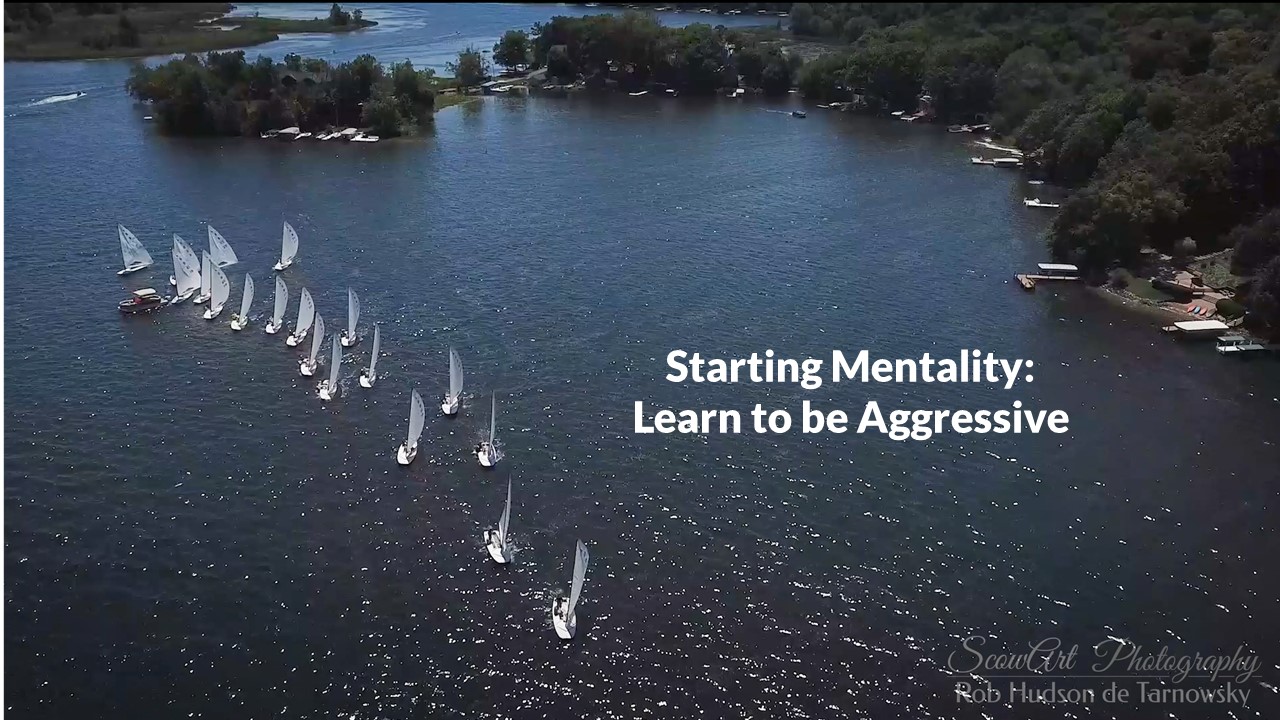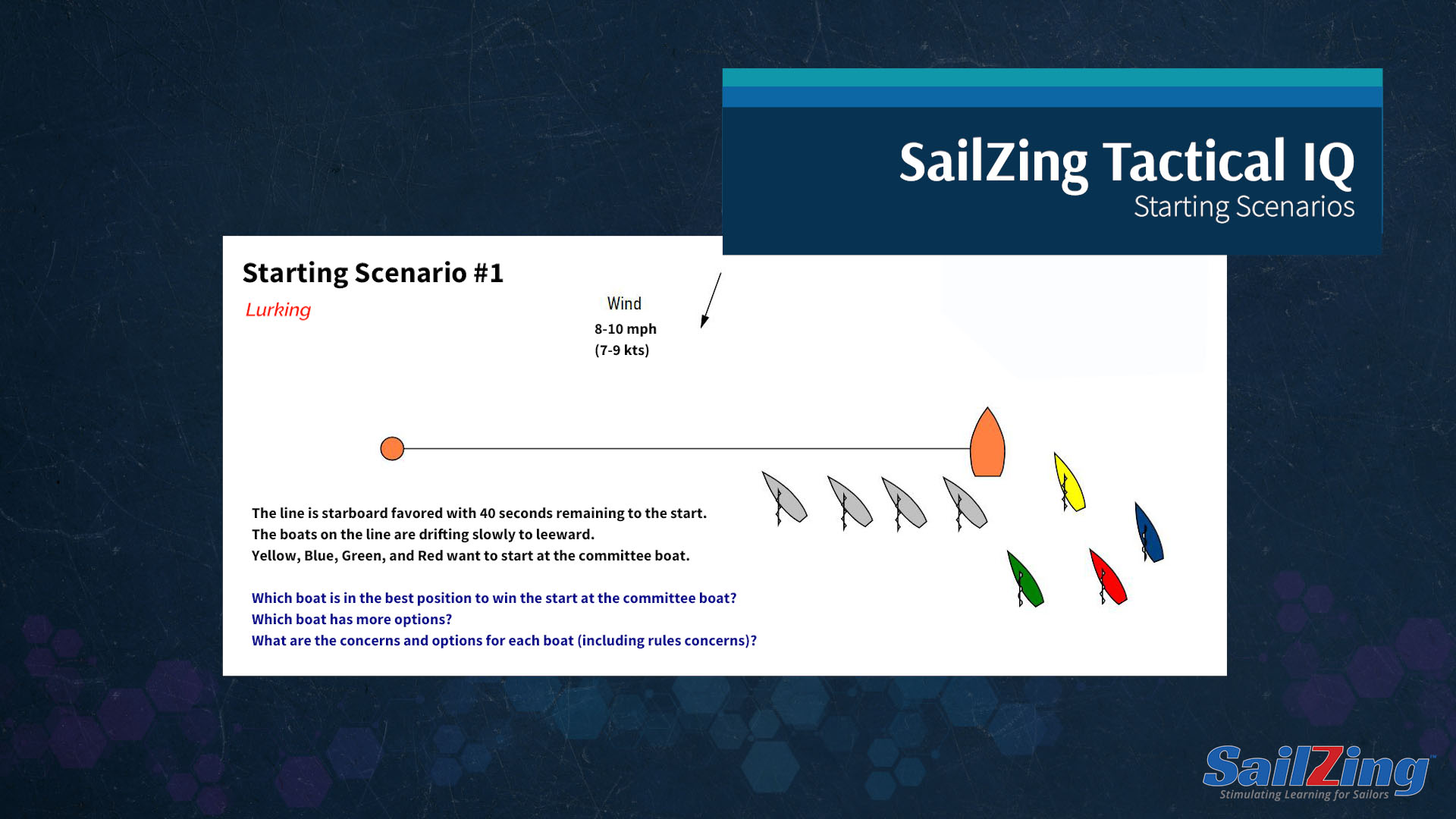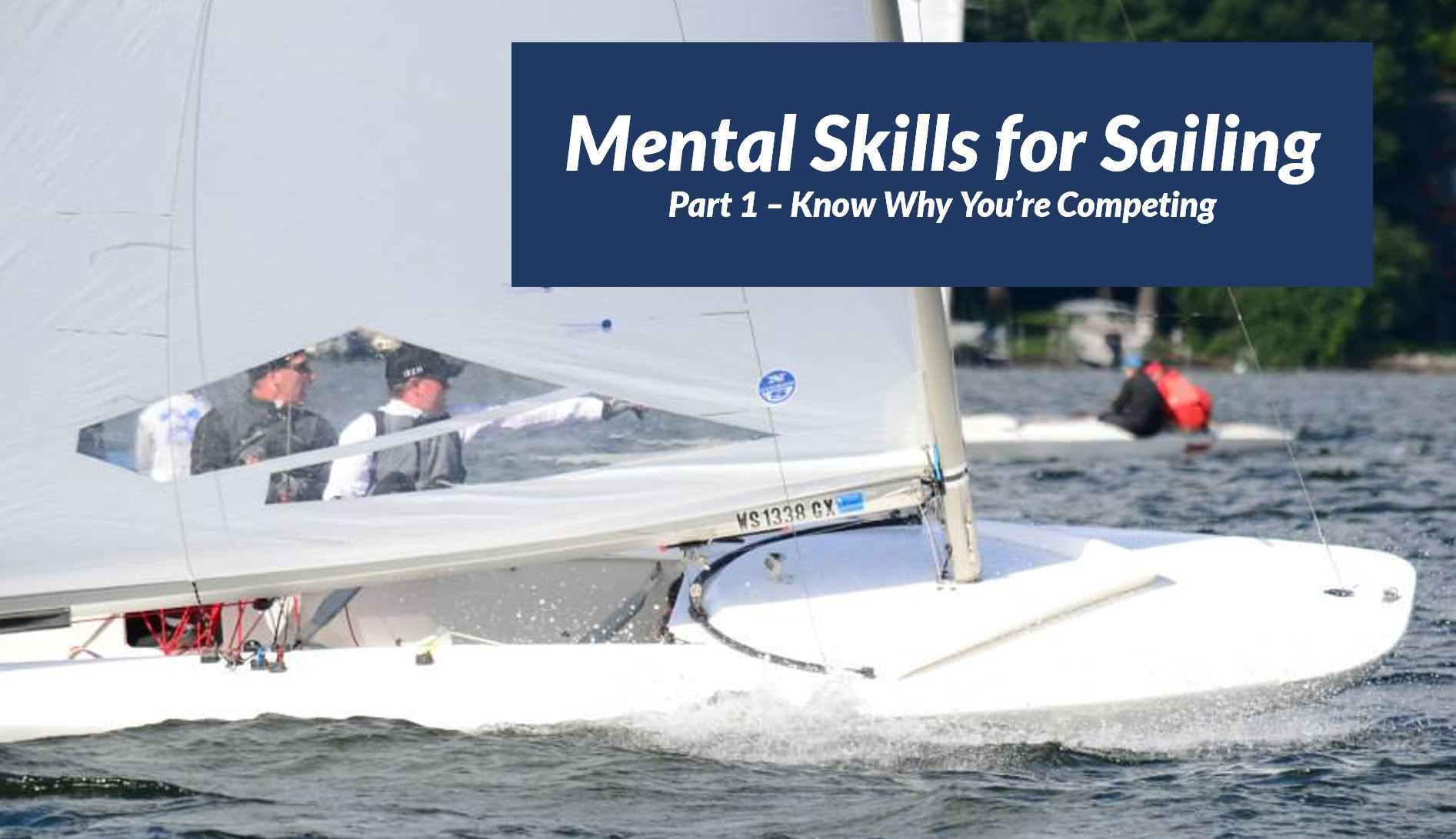Are you getting bad starts because you’re not being aggressive? If so, what’s holding you back? This post is designed to help you identify and eliminate barriers to an aggressive starting mentality. Even if you don’t have all the skills, an aggressive approach will juice your learning curve in this important phase of the race.
This post was inspired by the ILYA Fast Forward webinar series, presented by Roble/Shea Sailing. During the session on starting, Steph and Maggie talked about the team’s experiences with getting the starting mentality right. You can watch the excerpt below. Or, view the entire starting webinar here.
Aggressive Mentality + Skills = Success
Steph and Maggie described how they struggled with fear of being “on course side” (OCS, i.e., over early), despite having all the skills down. To conquer this fear, they had to rationalize it and develop techniques to give them more confidence. Any sailor struggling with starting may need to go through the same process.
What is an Aggressive Staring Mentality?
Starting aggressively simply means that you take the actions needed to achieve your goals for the start. We’ve discussed these actions in other posts, but they include creating a gap by forcing windward boats to head up, reacting quickly to defend a gap to leeward, sliding into a gap, making double tacks in limited spaces, holding position, shooting up to windward, keeping flow over your foils, judging time and distance, and accelerating efficiently.
To be aggressive, you have to be able and willing to take these actions, even if you’re not initially comfortable. Your confidence and results will improve just by trying them.
What’s Holding You Back?
If you want to become more aggressive at the start, think about what may be holding you back. In the video, Steph and Maggie discuss some of the potential issues and how to overcome them. We added some from our own reading and experience.
#1. Too little, too late
Maybe you’re not up for the challenge early enough. Unlike other sports, a sailboat race starts well before the start signal. Don’t waste the pre-start period by reaching around below the line and exchanging pleasantries with your competitors. This lulls you to sleep.
Instead, get focused by making yourself a pre-start checklist and crossing things off. This checklist should include the period from when you leave the dock all the way to the starting gun. Include some intensity in your checklist items – accelerations, tacks, gybes, etc.
The checklist should address the last 1-2 minutes of the sequence in detail – finding your spot, creating a gap, defending, and pulling the trigger. See Steph and Maggie’s checklist in our post Starting: ILYA Fast Forward Seminar.
#2. Fear of OCS
Perhaps fear of being over early is the issue. Steph and Maggie had some good thoughts on how to rationalize this:
- It’s almost as important to fear being behind at the start. Being behind is a double whammy – besides needing to play catch-up, the dirty air kills your boat speed and affects your judgment. Given the consequences of a bad start, many top sailors will tell you that if you’re not over early occasionally, you’re not trying hard enough.
- Being over early occasionally isn’t the end of the world. You can often re-round, get into clear air and catch up quickly. If it’s a black flag or U flag start, your series probably has one or more throw-outs.
Here are some practical tips to reduce your fear of being OCS:
- In crewed boats, gain confidence by assigning roles for the start. For example, Maggie is in charge of judging time and distance to the line, while Steph owns creating a gap to leeward. Develop a clear communications protocol.
- Know your fleet: which boats tend to push the line and which tend to hang back.
- Get a line sight. For more on this, see our post on Using a Line Sight.
- Realize that you only need to get your bow slightly ahead of the boats on either side. If you don’t overdo this, it’s unlikely that you’ll get called OCS, since your sail numbers will be covered. For more in this see our post on Executing the Start.
#3. Fear of mixing it up
Maybe you are a newer sailor and don’t want to mix it up with the veterans. Perhaps you’re uncertain about the rules, worried about fouling someone, or just lack confidence in your boat handling skills. This mentality is hard to change; you only get over it by trying something different.
- Until you get confident, find a low density area to start in. A good start in clear air away from the favored end often beats a bad start at the favored end. Don’t try to start next to an ace sailor.
- Learn the rules associated with starting. They’re not difficult. Focus on the rules associated with starting.
- Practice slow speed boat handling skills. You don’t have to master them all at first. In order of importance: heading up to create space to leeward, stopping/slowing down, accelerating, holding the boat in one spot, sliding the boat to windward, sailing backwards.
- Once you learn the rules and basic skills, don’t be shy about using them. The start is not the time to be nice. If the windward boat won’t head up, don’t be afraid to protest, or at least let them know you won’t stand for it.
- Defend your gap actively. There are a few simple techniques – use them.
- Don’t let another sailor bully you if you try to slide into a gap. Stay within the rules, but be brave and don’t feel bad if you get yelled at.





